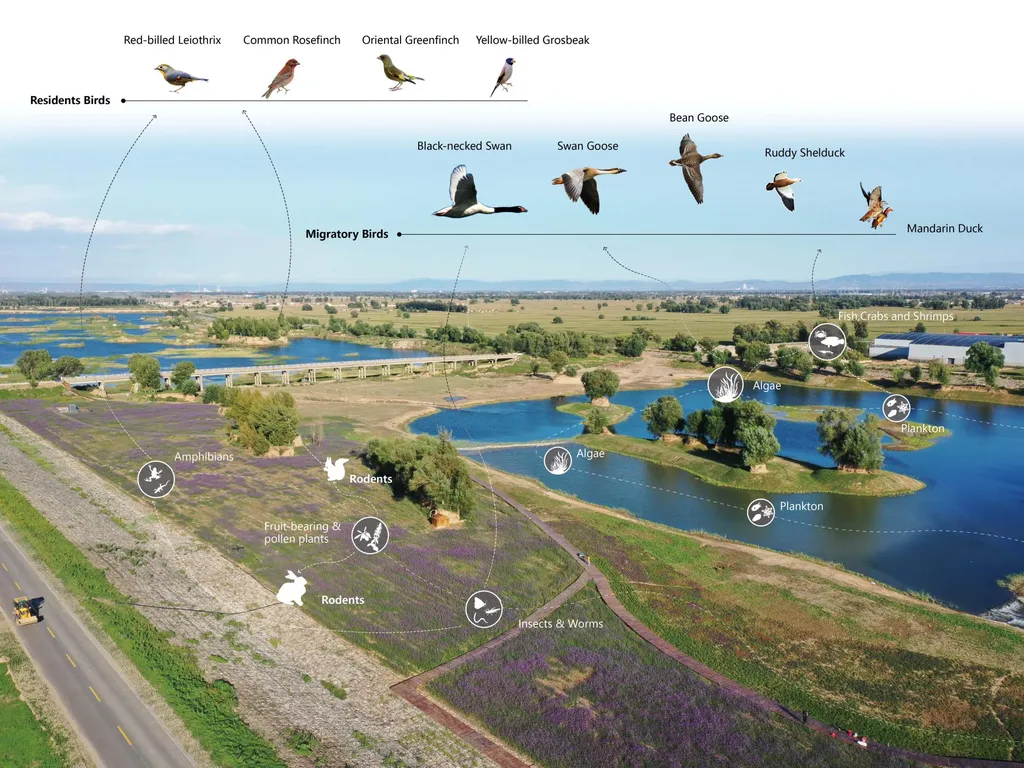In the arid expanses of Inner Mongolia, the Hetao Irrigation District has long been a cornerstone of agricultural productivity in China. However, the delicate balance between water use for agriculture and maintaining ecological health has become increasingly precarious. A recent study published in *Guan’gai paishui xuebao* sheds light on how this balance can be maintained, offering a roadmap for sustainable development in the region.
The research, led by WANG Nan from Hohai University and the Yellow River Institute of Hydraulic Research, evaluates the coordination of the water-food-ecology nexus in the Hetao Irrigation District. The study employs a comprehensive evaluation index and the entropy weighting method to assess the interplay between these critical subsystems. By analyzing data from 2009 to 2022, the researchers identified a significant shift in 2019 that altered the dynamics of the nexus.
“Before 2019, the driving forces of the three subsystems were similar, but after the abrupt change, the ecological subsystem became the dominant factor driving the increase in the coupling coordination,” WANG Nan explained. This finding underscores the importance of ecological health in sustaining agricultural productivity and water resource management.
The study reveals that the comprehensive evaluation index of the water-food-ecology nexus showed an increasing trend during the study period. The coupling coordination degree improved from 0.688 in 2009 to 0.844 in 2022, transitioning from a primary level to a well-coordinated level. This improvement highlights the potential for sustainable and high-quality development in the district.
For the agriculture sector, these findings are particularly significant. The research provides a systematic assessment of the water-food-ecological nexus, offering insights into how water resource management can be optimized to support ecologically friendly agriculture. This balance is crucial for ensuring long-term productivity and resilience in the face of climate change and increasing water scarcity.
The multi-factor attribution approach used in the study also offers a valuable tool for understanding the driving forces behind the coupling coordination. By identifying the key factors that influence the nexus, policymakers and agricultural stakeholders can make informed decisions that promote sustainable development.
As the world grapples with the challenges of climate change and water scarcity, the insights from this research are more relevant than ever. The study’s findings could shape future developments in water resource management and agricultural practices, not just in the Hetao Irrigation District but in similar regions around the globe.
In an era where sustainability is paramount, this research serves as a beacon of hope, demonstrating that it is possible to achieve a harmonious balance between water, food, and ecology. As WANG Nan and colleagues continue to explore these dynamics, the agricultural sector can look forward to more innovative solutions that support sustainable and high-quality development.
The study, published in *Guan’gai paishui xuebao*, represents a significant step forward in our understanding of the water-food-ecology nexus. With the insights gained from this research, the Hetao Irrigation District and similar regions can strive towards a future where agriculture and ecology coexist in harmony, ensuring food security and environmental sustainability for generations to come.

